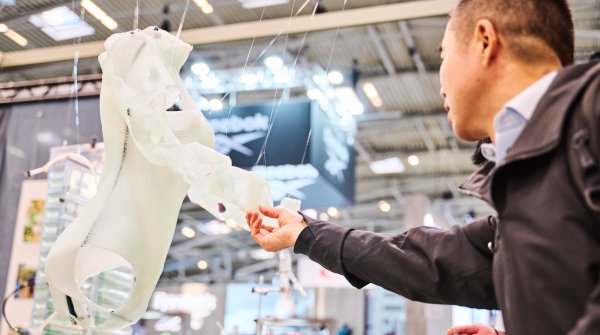The topic of sustainability in eCommerce is also becoming increasingly important in the sports and outdoor industry. The reasons: changing customer needs, environmental impact, regulatory requirements, business opportunities and a general responsibility towards the environment.
The eCommerce agency Creativestyle took a close look at the 20 largest sports and outdoor stores. When it comes to sustainability, the study concludes that by introducing more sustainable processes, companies can not only fulfil their environmental responsibilities, but also increase customer loyalty and sales.
Sustainable eCommerce is increasingly becoming a strategic success factor. Benedikt Merl, Marketing Consultant at Creativestyle, says: "To further increase their online sales, sports retailers need to be able to further adapt their eCommerce strategies to better meet new consumer expectations."
According to Merl, consumers* are increasingly paying attention to brands and the values they convey: "Customers are increasingly demanding more sustainable products." They would take more time to inform themselves and compare before making a purchase decision. The online stores surveyed are already making the first adjustments to this - almost every second one offers a repair service, for example. This saves both money and resources.

According to the Creativestyle Report, it is important that consumers who want to shop consciously have all the necessary information at a glance and do not have to search extensively for sustainability aspects. That's why the eCommerce experts emphasize: A sustainability filter directly in the PLP (Product Listing Page) is indispensable. Online stores can go one step further by going into more detail on the PDP (Product Detail Page) about which criteria are taken into account and under which conditions a product is manufactured.
The professionals also found: Companies that consciously include the topic of sustainability in their corporate guidelines and also communicate this directly in the navigation bar or header/footer create more trust.
A total of four transparency points were tested:
- Can sustainable products be recognized at a glance (as a filter or badge)?
- Is there further information on products and transparency on the PDP?
- What about communication about sustainability (header/footer or navigation)?
- And is shipping also climate-neutral?
The result: Six online stores meet all four points. Four companies only weaken when it comes to climate-neutral shipping. Three shippers meet two of the four criteria and three online stores score only one point. Four stores have a lot of catching up to do: they do not - yet - communicate any sustainability issues.
Bergfreunde, for example, has firmly anchored the topic of sustainability in its corporate values and already communicates at first glance: "We are climate neutral".
The new outdoor jacket is ordered and the anticipation for the part rises. The packaging is then the first point of contact when the long-awaited product finally arrives. It has a significant impact on sustainability, as it can generate a large amount of waste and emissions. In 2021, per capita packaging waste in Germany was around 237 kilograms, which is significantly higher than the EU average. This is “only” about 189 kilograms. (source: German Federal Statistical Office).
In addition, customers* often receive excessive and unnecessary packaging, which leads to a waste of resources and a burden on the environment - and to annoyance at the overflowing paper waste rubbish can. According to the Creativestyle report, 83 percent of consumers want the packaging material for online orders to be fully recyclable. Packaging therefore plays a central role in sustainable eCommerce.

The 20 online stores surveyed gave a good picture when it came to packaging materials: 18 sent their goods on their way in paper, only two in plastic. The ratio looks worse for plastic tape and cable ties: The packages arrived with these five times. There is also still room for manoeuvre when it comes to filling material: seven use none at all, 13 use filling material - but at least this was environmentally friendly at twelve online stores.
The size ratio of product to packaging shows a different result. Only 13 shops gave this a green tick. There is definitely room for improvement when it comes to returns: only three packages can be sealed with self-adhesive tape and thus returned without plastic tape.
In first place for packaging (with a score of 6 out of 7) was bikester.co.uk, followed by Bergzeit and Bike-Discount (5 out of 7).
The repair service is not only a real added value for online shoppers from a sustainable point of view - this is another result of the Creativestyle Report. One thing is clear: customers save money, because buying a new product is often more expensive than repairing it. In addition, the useful life is increased.
In this way, a good repair service can lead to higher customer satisfaction and customer loyalty. After all, customers have the opportunity to keep the products they have grown to love instead of having to replace them.
Whether a repair service really makes sense depends, of course, on the type of product. Nevertheless, almost 50 percent of the largest German online stores in the sports and outdoor industry already offer this service.
At Rose Bikes, customers can book an appointment for a repair directly via the website in a service portal. This saves time and ensures quick assistance.
More and more customers are concerned about the use of resources and the impact of their consumption decisions on the environment. A lending service allows them to use products without owning them, which helps reduce waste and emissions. In addition, customers save a lot of money while having access to the latest products without having to buy them. Such offers are an important building block for sustainable e-commerce that relies on sharing models and resource conservation. However, the Creativestyle report notes, "Unfortunately, this service is still offered too little in the sports and outdoor industry."
Globetrotter and Intersport offer a rental service.
A second-hand marketplace is another way for online stores to promote the sustainability of the products they sell and reduce waste. Returned items or slightly used sports equipment are offered here - integrated into the online store website - at a lower price and given a second life. However, only two of the 20 mail order companies surveyed offer this sustainable eCommerce service.
At Decathlon, you can buy returned or returned items at a lower price in the second-use store as well as offer old sports equipment for repurchase yourself with the so-called buy-back system.
- ISPO awards
- Mountain sports
- Bike
- Design
- Retail
- Fitness
- Health
- ISPO Job Market
- ISPO Munich
- ISPO Shanghai
- Running
- Brands
- Sustainability
- Olympia
- OutDoor
- Promotion
- Sports Business
- ISPO Textrends
- Triathlon
- Water sports
- Winter sports
- eSports
- SportsTech
- OutDoor by ISPO
- Heroes
- Transformation
- Sport Fashion
- Urban Culture
- Challenges of a CEO
- Trade fairs
- Sports
- Find the Balance
- Product reviews
- Newsletter Exclusive Area
- Magazine








